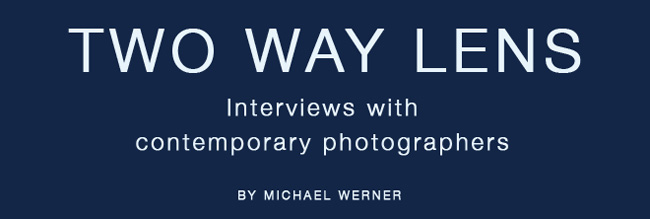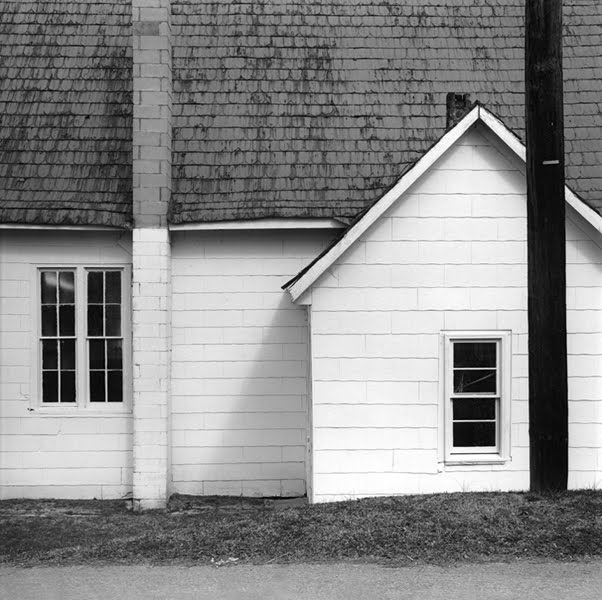MW
What inspired you to start taking photographs, and what is the primary inspiration for you to keep working in this field?
EJ
I am curious and my art has evolved as a result. I don't really consider my self a "Photographer", but rather an artist who uses photography as my art form. There have been several times in my life where photography played a roll, first when quite young. At the age of five, I received a Brownie camera for my birthday and proceeded to capture the world around me. I have dozens of spiral bound booklets of photos where I scribbled words on the backs of each in crayon. Later, in college, I learned the basics of how to use a camera. I developed my own film and printed enlargements in a makeshift darkroom. But all of this was abandoned, as I did not find it fulfilling. It seemed too "real", I couldn't find the art in it…. yet.
With the advent of digital cameras and the ability uploading my images into a computer and subsequently altering and changing them, I found my perfect medium. Through alteration, I am able to subvert the "decisive moment" concept. Every image is a flexible piece of information that can be brought into the future or blended with the past.
I am inspired by the natural world, science (recent discoveries in physics; "multiverses", doppelgängers) and human consciousness. I am intrigued with issues of reality, memory, time and loss.
The photograph, historically, was seen as an evidentiary medium but as we all know, photos lie. The first lie is the translation of three-dimensional space into a 2 dimensional form with its subsequent framing of reality (and what was just outside of that framed area? How does that affect the story being conveyed?)
I have just finished Errol Morris's book "Believing is Seeing (Observations on the Mysteries of Photography" where he shows that even documentary photography has been manipulated.
I must say that my primary inspiration that keeps me working in this field is magic.
Photographs are magical creations (or should be). I strive to surprise myself at every turn. My aim is to create images that speak to people, that convey my sensibilities in a way that leaves room for the viewer to insert themselves and their interpretations.
MW
In your opinion and experience, how can emerging photographers evaluate themselves as ready to start promoting their works and seek broader exposure for their photographs? What is one vital action you would recommend photographers undertake to find their audience, be included in exhibitions, and gain professional representation?
EJ
There are many ways that emerging photographers can evaluate themselves.
First, a photographer must have a point of view, preferably a unique point of view. They must understand why they are using this medium as a creative outlet. (Writing a statement can help solidify one's objective).
They should study the work of other photographers and analyze what it is that they like and don't like and find a voice for describing their work in comparison to other's. It is always good to view work in person. Attend as many exhibitions as you are able to.
Create a personalized website, YourName.com (if possible) and upload a selection of your best work, update often with new pieces, begin sharing your URL.
Once the artist is fairly confident that they have a point of view worth sharing, I would recommend entering a few well selected juried competitions. Search for ones where the jurors are high profile professionals. This is a fairly inexpensive way to see if your work resonates. With the advent of so many social networks online, it is much easier for a lone photographer to become part of a community and learn about opportunities. Prepare for many, many rejections and don't be discouraged.
Much has been written about the benefits of portfolio reviews and I agree they have their place. But, the photographer has to be well prepared and well funded to participate. Attend with an open mind and take notes. Leave a little something behind so that the reviewer will remember you, a business card or post card. Follow up by thanking each reviewer by mail or email. Follow them on Twitter, Facebook, etc.
It is vital to establish relationships with other photographers, curators and gallery owners.
MW
How did it come about that you achieved the status of successful, professional photographer? What steps were involved in reaching your level of success?
EJ
First, I kept working and refining my point of view. I enlisted the help of my husband Michael Jantzen (who is an artist) to act as a sounding board. He has been a great help with my editing process (and my main model).
Second, I started writing statements. The act of putting thoughts, feelings and intentions into sentences, helped me solidify my unique point of view.
Third, I created my website.
Fourth, I started to establish a database of jurors, gallery owners, curators, and other photography and art contacts. All were culled from reading reviews, journals, blogs and by word of mouth.
Fifth, I began to enter juried competitions. There was a steep learning curve as I grew to know which exhibitions and opportunities were the most significant. Luckily I was able to attract a bit of attention this way and won a few honors. Next, I began to seek publication opportunities. I looked at small startup publications first and followed their submission requirements.
Sixth, I joined groups like the Center For Fine Art Photography, the Atlanta Photography Group, Humble Arts Foundation, Griffin Museum of Photography, The Texas Photo Society. They all have newsletters and post member's news.
I promoted myself whenever I got into an exhibition, or was published by sending emails.
Seventh, I attended one portfolio review in Atlanta and was energized by the reviewers and the subsequent interactions with each, both in emails and online (Twitter and Facebook). The reviewer Stella Kramer made one salient point; she suggested always including a photo in any email, not just links. She never clicks on a link unless she sees something that peaks her interest.
Eighth, I stepped up my presence on Facebook by joining several photo related groups like, Flak Photo Network, A New History of Photography, etc. I try to post comments and interesting bits of information I find on the web. Through these interactions, I established a relationship with Susan Spiritus of the Susan Spiritus Gallery in Newport Beach California. Once Susan started seeing my work come through juried competitions she was judging, she started to take an interest in my work and earlier this year started representing me.
All of this "overnight success" took about seven years.
 Proof, from the series Losing Reality; Reality of Loss
Proof, from the series Losing Reality; Reality of Loss
© copyright al images Ellen Jantzen



















































